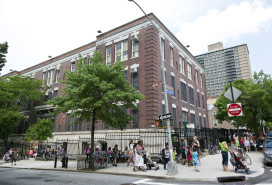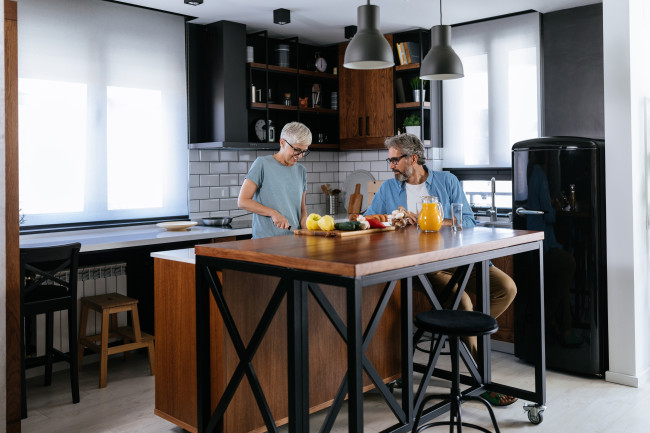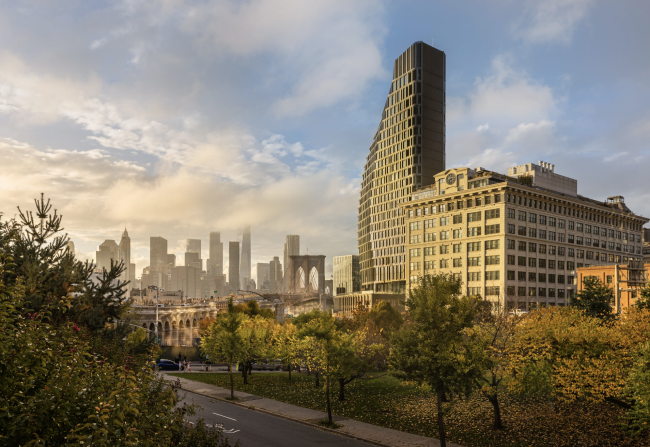What is a pied-à-terre? What makes it different from a typical NYC apartment?
- About 80 percent of pieds-à-terre in Manhattan are condos; co-op rules typically preclude pied-à-terre buyers

Midtown is a top neighborhood for pied-à-terre buyers.
Getty Images
Pied-à-terre is the term used to describe an apartment that isn’t an owner’s primary residence. If the name sounds fancy, it is because it comes from the French phrase meaning “foot to the ground.” Some owners refer to them simply as second homes.
According to Martha Stark, a clinical professor at the Robert F. Wagner Graduate School of Public Service at NYU and a former New York City finance commissioner who has examined the city’s data on second homes, properties are considered pieds-à-terre if they are not owned in an individual's name or if the owner is not receiving a tax benefit from the city that’s only given to residents.
[Editor's note: A previous version of this article was published in March 2024. We are presenting it again with updated information for March 2025.]
If you're in the market for a second home in NYC or are looking to sell your apartment and want to know what appeals to a pied-à-terre buyer, read on.
Who is buying pieds-à-terre in NYC?
NYC has long been where wealthy international buyers safeguard their money by owning a pied-à-terre. These buyers readily accept paying a premium for NYC real estate.
"I am seeing a lot of pied-à-terre interest from West Coasters—mostly from Silicon Valley—and also the Midwest," said Frank Barone, an agent at Douglas Elliman.
Pieds-à-terre aren’t exclusively for the super-wealthy, either. Some buyers are middle-income empty nesters. "There’s also a large contingent of people based in the tri-state area who need a place periodically when going to the office," Barone added.
Do all buildings allow them?
Buildings set their own rules about pied-à-terre ownership. Some co-ops allow them outright, while others explicitly prohibit them. Some permit pied-à-terre purchases only on a case-by-case basis.
Stark’s most recent estimate (from 2023) puts the total number of pied-à-terre properties in Manhattan at 10,415, of which about 80 percent are condos.
"In most cases, boards are skeptical about these buyers’ ‘loyalty’ to the co-op, both financially and in regard to the overall upkeep of their unit," Barone said, adding they don't want owners to permit other people to use the unit (e.g., as an Airbnb or short-term rental, or even a free lodging for a steady stream of invited family and friends) when they are not there, "especially with all this recent talk about squatter's rights in NYC."
For example, he had two listings in a West Village co-op that ruled out pied-à-terre buyers. After a former pied-à-terre owner could not be reached for a few weeks when the super needed access to their apartment for a maintenance issue in the apartment below, "the board decided ‘no more!’"
The board even rejected an all-cash offer that was above market from a buyer who would be splitting his time between Texas and NYC, but would mostly be in NYC.
"The board felt he would not be using the apartment as frequently as they would like. This was despite the fact that this deal could have increased the value of all the units in the co-op," Barone said.
| What makes a pied-à-terre different from the typical apartment in NYC? | |
|---|---|
| What is it? |
|
| Who buys them? |
|
| Where are they? |
|
Where are NYC pieds-à-terre?
Some buyers head to the outer boroughs for a deal—Williamsburg, Long Island City, and Park Slope are popular neighborhoods. But most buyers want a pied-à-terre in Manhattan near the city’s cultural institutions and business centers.
Co-op buildings on Fifth Avenue in Midtown have long been the top choice for NYC second-home buyers—and these are an exception to the rule about co-ops being unfriendly to pied-à-terre buyers. Many of these have flexible policies that allow second-home owners who meet their financial requirements.
However, Barone is seeing an increasing number of buyers focus on Downtown neighborhoods below 34th Street, from Chelsea to the Financial District.
"Lots of companies have opened offices Downtown, such as Disney and Google in Hudson Square. There is also great condo inventory in the area, especially in new developments, so would-be buyers do not have to worry about any co-op rules. They also want to be closer to the action and amenities (restaurants, nightlife, shopping, parks) that can be found Downtown," he explained.
The risk of a potential pied-à-terre tax
A pied-à-terre tax is something that’s often proposed by lawmakers but has yet to be enacted. The main argument from opponents is that it would put buyers off, discourage developers, and slow deals. But not all brokers think buyer behavior will be affected by a pied-à-terre tax, especially among wealthy buyers.
Some critics say the income from any pied-à-terre tax is overestimated while proponents point out any revenue from real estate is badly needed.
What do buyers want in a NYC pied-à-terre?
Pied-à-terre buyers are typically looking for excellent amenities, privacy, and a work-from-home space. That often translates into new condo developments, which boast state-of-the-art fitness centers (helpful for part-time residents) and common WFH areas to replicate an in-office experience. Of course, the more amenities there are, the higher the carrying costs will be.
Another consideration is resale value. Closing costs are high in NYC and include state and city transfer taxes, a mansion tax determined by a sliding scale, a flip tax in some buildings, as well as attorney fees.
If you’re borrowing money there may be additional costs. Keep in mind, investment properties have higher lending requirements and higher rates, so you can’t seek financing for a pied-à-terre and then rent the place out. Make sure you accurately represent to your lender how the property will be used.
Your apartment needs to appreciate about 10 percent for you to cover your closing costs, so you really have to make sure you're buying the right apartment.
—Previous versions of this article included writing and reporting by Nikki M. Mascali and Emily Myers.
You Might Also Like






























